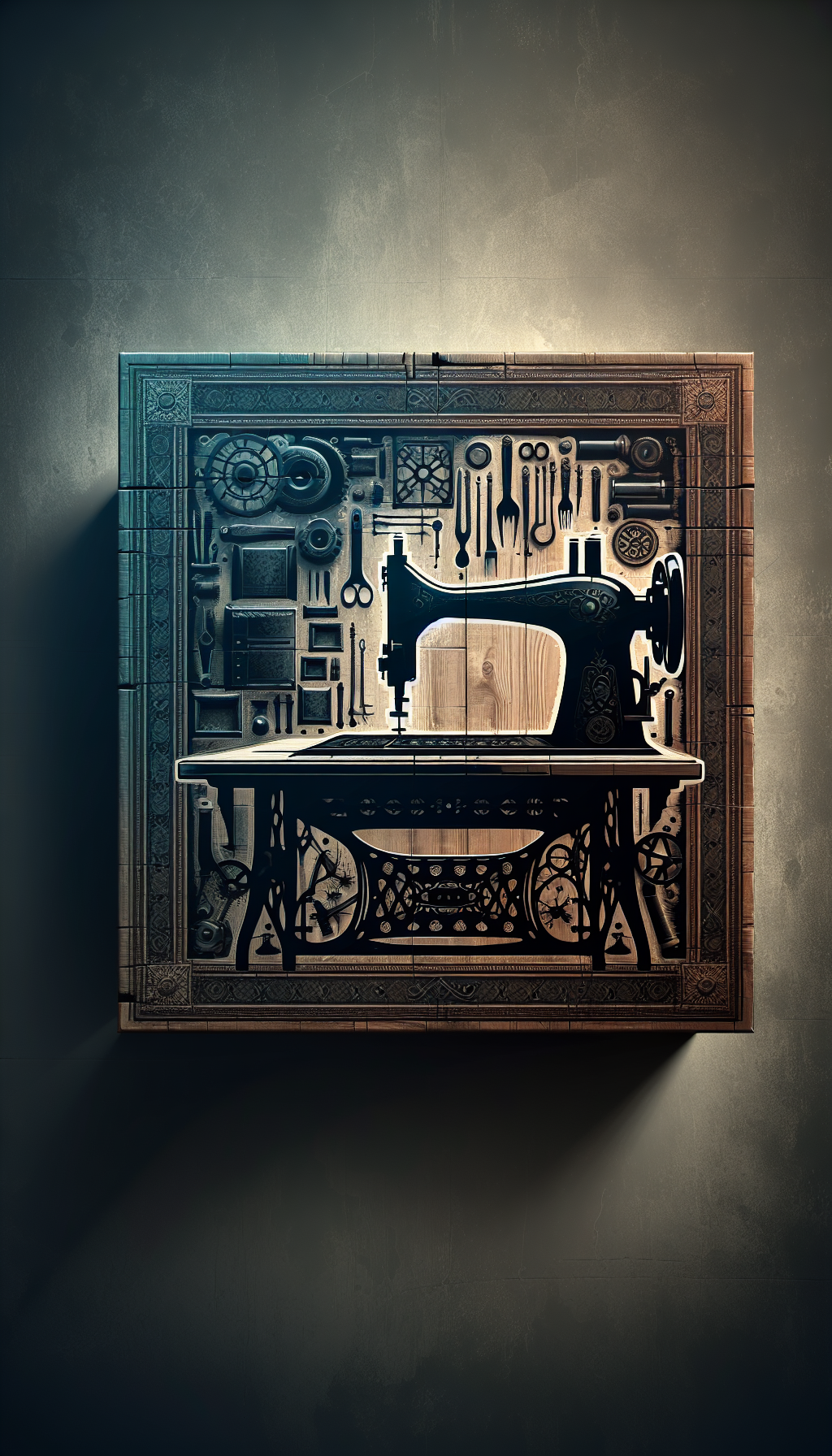A Fine Quality Mahogany Georgian Library Accent Armchair From Circa Late 20th Century
A mahogany Georgian-style library armchair made in the late 20th century offers the look and presence of 18th-century English design without the fragility or price point of true period seating. For appraisers and collectors, distinguishing quality repro from generic revival, identifying maker, and correctly assessing condition and value are essential. This guide focuses on the diagnostic features, construction, condition considerations, and market realities for a fine quality example circa 1975–1999.
The Georgian Library Armchair: Style Cues and 20th-Century Revival
“Georgian” in furniture generally refers to English designs from 1714–1830 and encompasses Chippendale, early Hepplewhite, and Sheraton idioms. A library armchair from this tradition usually presents:
- A sturdy mahogany show-wood frame with shaped arms and padded seats and backs, intended for extended reading.
- Square, tapered, or reeded front legs, often terminating in spade or block feet; back legs splayed and raked for stability.
- Carving that may include acanthus leaves on knees, gadrooned seat rails, or stop-fluting on legs (more formal examples).
- Brass cup casters on front legs for mobility across carpets—a common library feature.
- Conservative proportions with generous seat depth, typically around 18–20 inches high at the seat and 26–30 inches wide across the arms.
Late 20th-century revivals drew on these motifs with emphasis on comfort. Expect:
- Fully upholstered backs and seats with self- or contrast piping.
- Ergonomically pitched backs and slightly broader arms than many period chairs.
- Factory-applied stains and varnishes that emulate aged mahogany.
- Maker-branded or labeled frames—high-end manufacturers took pride in attribution.
Reputable makers during this period include American firms such as Baker (Historic Charleston, Stately Homes collections), Hickory Chair (James River/Regency lines), Kittinger, Councill Craftsmen, and UK manufacturers like Bevan Funnell (Reprodux) and Brights of Nettlebed. Later entrants like Maitland-Smith and Jonathan Charles have similar aesthetics; some overlap reaches into early 21st century.
Construction and Materials: What Confirms Quality
Assessing quality begins under the surface. Remove cushions, tilt the chair, and use a flashlight to examine the frame.
Wood and veneer
- Primary wood: Genuine mahogany (Swietenia macrophylla) appears in many higher-end examples pre- and post-1992 CITES restrictions; African mahoganies (Khaya spp.) are also common, with slightly interlocked grain and ribbon figure. Sapele (Entandrophragma cylindricum) occasionally appears as a veneer with pronounced ribbon stripe.
- Color and grain: Even, moderate-to-fine grain with chatoyance; ribbon figure on legs or rails may indicate veneer over a secondary hardwood core.
- Secondary woods: Birch, beech, or poplar are typical for hidden parts in American chairs; beech is common in British frames.
Joinery and frame
- Joints: Machine-cut mortise-and-tenon or double-dowel joints at seat rails to legs; corner blocks glued and screwed. Period chairs rely on larger hand-made tenons and chamfered corner blocks with cut nails. In late 20th-century chairs, you may see Phillips-head screws (a quick indicator of modern manufacture) and uniform dowels.
- Carving: If present, crisp yet consistent, often symmetrical—indicative of machine-carving refined by hand-sanding. True hand carving shows subtle asymmetries and tool facetting.
- Back supports: Raked rear stiles may be laminated or steam-bent. Uniform curvature with minimal compression wrinkles suggests machine bending.
Upholstery
- Foundation: Modern jute or synthetic webbing, stapled rather than tacked; sinuous (“zig-zag”) springs are common in American-made pieces; British-made frames often retain webbing plus coil springs for higher comfort tiers.
- Fill: Polyurethane foam with Dacron wrap is standard; high-end examples sometimes use down/feather wraps in cushions.
- Fabrics: Hard-wearing cotton damask, leather, mohair velvet, or wool twill. Late 20th-century leathers tend toward corrected-grain with surface pigment; premium makers used aniline hides with a softer hand.
Finish
- Stain and topcoat: Aniline dye or pigmented stain topped with sprayed nitrocellulose lacquer or catalyzed varnish; sheen typically satin to semi-gloss. Hand-rubbed lacquer is a hallmark of better production. French polish (shellac) is uncommon on factory upholstery frames from this era.
Hardware
- Casters: Solid brass or brass-plated steel; reproduction cup casters with machine-made screws. Check that caster plates match and turn freely; mismatched or one missing caster affects value and usability.
Overall, a fine quality late 20th-century chair feels tight in the frame when you lift one front leg—minimal racking or creaks—yet carries a little spring in the seat, with even support.
Authentication and Attribution: Period vs. Reproduction, and Maker Clues
Because the style reads “Georgian,” confirm reproduction status and, if possible, attribute to a maker.
Period vs. reproduction indicators
- Screws: Phillips screws and uniform machine bolts indicate 20th century; slotted screws are not definitive (many repros used slotted heads), but threads will be very regular.
- Tool marks: Router radii and uniform molded profiles at every corner suggest modern machining; period pieces reveal small inconsistencies, hand-planed tear-out, or chisel facets hidden under rails.
- Patina: Genuine 18th-century patina shows oxidized, uneven color in recesses, blackened end-grain at foot bottoms, and wear points aligned with body contact. Artificial distressing often concentrates at edges with uniform coloration elsewhere.
- Proportions: Many repro library chairs are slightly larger and deeper for contemporary comfort.
Maker attribution cues
- Labels and brands: Look under the seat, on a rear stretcher, or beneath the arm rail for paper labels, brass plaques, or burned-in stamps. Baker Furniture often used brass tags or paper labels with collection names; Hickory Chair used branded medallions and stapled labels with product codes; Kittinger and Councill had branded or paper labels with model numbers. Bevan Funnell (Reprodux) typically used paper labels and sometimes a branded mark.
- Model numbers: Stenciled or stamped numbers on seat rails can be cross-referenced with maker catalogs or invoices if available.
- Upholstery tags: Law labels (in North America) on cushions can identify manufacturer and date ranges; retained tags are useful for dating within a decade.
If unlabeled yet finely made, compare leg profiles, arm terminations, and seat rail shaping to known catalog patterns. High-quality joinery, carefully matched veneers, and hand-rubbed finishes suggest an upper-tier maker even without a label.
Condition, Conservation, and Value: What Matters Most
Condition analysis should separate structural, finish, and upholstery considerations, as each impacts value differently.
Structural
- Joints: Minor play in arms or creaking at seat rails can often be resolved with re-gluing; sight for hairline cracks at leg tops where they meet the rails.
- Breaks and repairs: Repaired breaks at arm terminals or the knee of a carved leg are common damage points; a professionally splined and tinted repair is acceptable but reduces value relative to pristine.
- Casters: Replaced casters are acceptable if of similar style and size; missing casters should be replaced to protect floor and level the chair.
Finish
- Surface wear: Light abrasions and ring marks can be sympathetically polished. Heavy re-staining or complete refinishing typically diminishes value for collectors but is less penalizing in high-use interiors.
- Color: Sun-fade on the exposed side of arms and back is common; a skilled restorer can blend color without stripping.
Upholstery
- Hygiene and support: Foam oxidizes over decades, leading to crumbling; reupholstery with quality foam or springs is standard maintenance and rarely penalizes value if the fabric choice is sympathetic to the period style.
- Leather: Surface pigment cracks or delamination on corrected-grain leathers may require re-covering; original aniline leather in good order is a premium.
Market values
- Auction: Quality late 20th-century Georgian-style mahogany library armchairs generally sell between $300 and $1,200 at regional auction, depending on maker, condition, and location. Labeled Baker, Kittinger, or Bevan Funnell examples can bring $600–$1,800 when fresh-to-market, with premium upholstery.
- Dealer retail: Expect $1,200–$3,500 for top-condition, named-maker examples with desirable leather or high-grade fabric. Unlabeled but clearly quality pieces typically sit $800–$2,000.
- Period comparison: True 18th-century library armchairs—especially with provenance and original elements—command significantly higher prices, often $3,000–$20,000+, which underscores the affordability of late 20th-century equivalents.
Trends
- Brown furniture has seen volatility, but practical, well-made seating retains steady demand. Leather-upholstered examples with classic brass casters remain particularly salable. Pairs are markedly more valuable per chair than singletons.
Documentation and provenance
- Retain receipts, catalogs, and upholstery invoices; they substantiate date and quality and can increase buyer confidence at resale.
Quick Appraisal Checklist
- Confirm reproduction status by inspecting screws, tool marks, and patina patterns.
- Identify wood: Swietenia vs. Khaya vs. sapele veneer; check grain and ribbon figure.
- Check joinery: Tight mortise-and-tenon or dowel joints; sound corner blocks; minimal racking.
- Look for maker: Labels, burned brands, brass plaques, stenciled model numbers, cushion law labels.
- Inspect casters: Matching brass cups, freely turning wheels, original or well-matched replacements.
- Evaluate finish: Even sheen, no active flaking; prefer original finish with sympathetic touch-ups.
- Assess upholstery: Foundation integrity (webbing/springs), foam condition, clean fabric/leather.
- Note dimensions: Seat height around 17–19 inches; width 26–30 inches; seat depth suitable for reading posture.
- Record condition issues: Breaks, repairs, sun-fade, stains—photograph and describe.
- Compare comps: Recent sales of similar labeled chairs; adjust for condition and upholstery quality.
FAQ
Q: How much does reupholstery affect value? A: For late 20th-century chairs, professional reupholstery in a sympathetic fabric or good aniline leather typically maintains or improves marketability. Avoid overly contemporary patterns if the aim is to preserve historical character. Poor workmanship or cheap materials will depress value.
Q: How can I distinguish Honduran mahogany from African mahogany? A: Honduran (Swietenia macrophylla) usually shows straighter grain with a warm reddish-brown tone and subtle ribboning; African mahogany (Khaya spp.) often displays interlocked grain with more pronounced ribbon figure and can read slightly lighter or more orange before oxidation. Weight and pore structure also differ, but positive identification often requires experience or lab analysis.
Q: Are brass casters original to late 20th-century chairs, and should I keep them? A: Yes, brass cup casters are typical for Georgian-style library chairs and are practical on rugs. Keep them if functional; replace like-for-like if damaged. Removing casters lowers the chair height and can upset the intended posture.
Q: Does refinishing destroy the value? A: Full stripping and refinishing usually reduces collector value, but a careful clean-and-wax or targeted color blending is acceptable. If the finish is beyond salvage (peeling or severely alligatored), a high-quality refinish can restore usability, though note this in appraisal.
Q: What dimensions are ideal for comfortable reading? A: A seat height around 18 inches, seat depth of 19–21 inches, and a gentle back rake provide comfort. Arm height around 25–27 inches supports the forearms. Late 20th-century versions often adhere to these ergonomics, making them practical for daily use.
By applying these diagnostics—style literacy, construction knowledge, maker attribution, and nuanced condition grading—you can confidently evaluate a fine quality mahogany Georgian library accent armchair from the late 20th century and position it accurately in today’s market.



